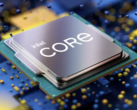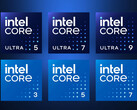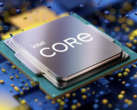Even though Google and IBM may claim that quantum supremacy over traditional transistor-based processors has already been achieved, quantum computers are in a complicated predicament right now. On the one hand, the potential to solve problems that otherwise would take thousands of years with traditional CPUs and GPUs is indeed transformative for future endeavors, but on the other hand, the current qubit counts and error correction methods are still not good enough to allow for any meaningful results. This particular type of quantum computers is quite cumbersome and requires large cooling devices to keep the qubit integrity at temperatures close to absolute 0. But there are other types of qubits that rely on more traditional designs, like the ones that Intel wants to push as a reliable alternative with its latest “Tunnel Falls” silicon-based quantum chips.
It was just a matter of time before Intel entered the quantum race. However, Team Blue is exploring a different path that utilizes silicon spin qubits combined with quantum dot circuitry that can be manufactured via something similar to the CMOS process. This also allows for an incredibly high yield. Intel claims that it can achieve 95% yields for a 300 mm wafer with 24,000 quantum dots.
A silicon spin qubit is very similar to traditional silicon transistors both in function and in form. With a diameter of only 50 nm x 50 nm, silicon spin qubits can be up to a million times smaller than the qubits used in IBM’s quantum chips. It is also supposed to be more coherent as the information is encoded according to the spin properties of a single electron. Given the substantially smaller size and complexity, Intel plans to scale the number of qubits to thousands and even millions in several years. For now, the most coherent formation offered by Intel only includes 12 qubits which is significantly less than IBM’s 1121-qubit chip scheduled to launch later this year. Nevertheless, Intel expects to catch-up by 2027 as far as qubit count and error correction capacity is concerned.
Tunnel Falls is now available as a 12-qubit test chip for academic and R&D environments, as Intel is already working on the next gen version scheduled to release next year. Full-scale industrial production could occur towards the end of the decade.
Source(s)
via DigiTimes / Ars Technica / Tom's Hardware















